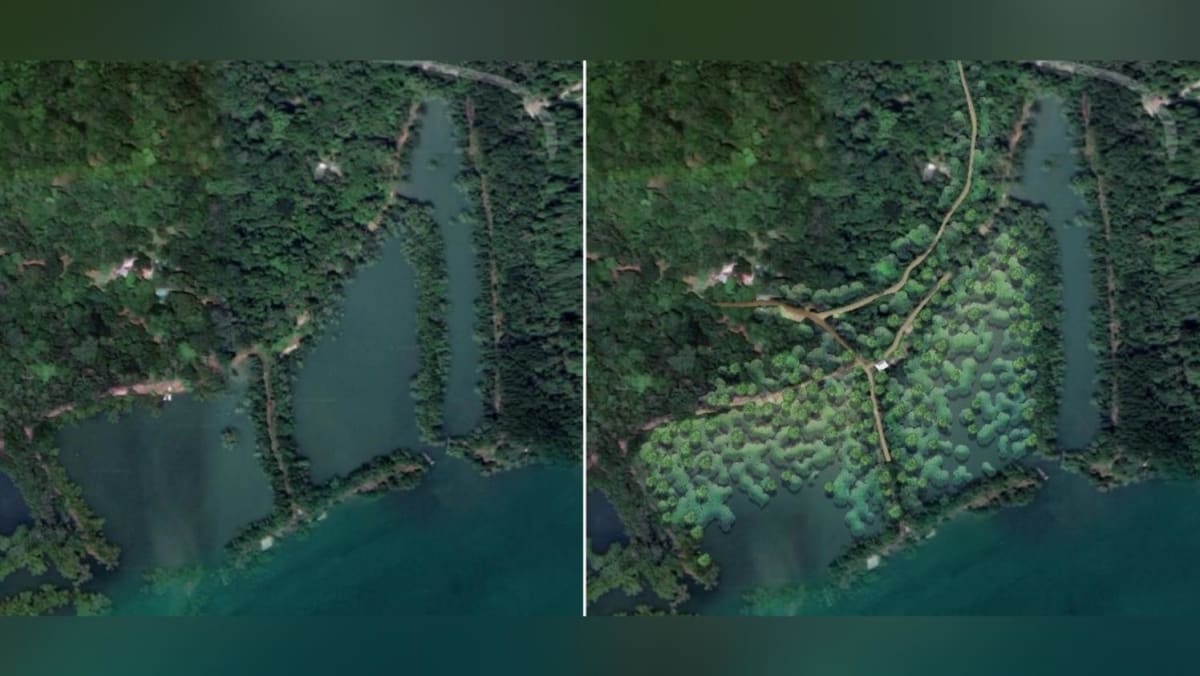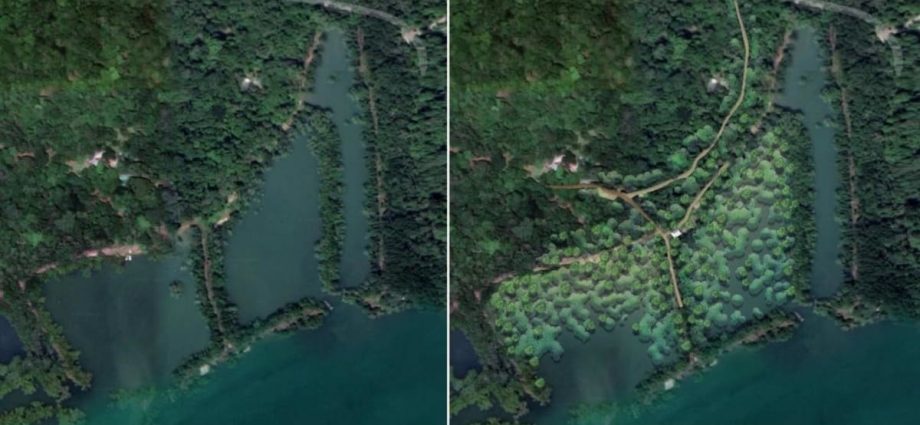
SINGAPORE: The National Parks Board (NParks) and OCBC Bank unveiled plans on Saturday (Oct 29) for 8,000 mangrove plants to “naturally take root” at a site in Pulau Ubin that is currently filled with abandoned aquaculture ponds.
Located at Sungei Durian in Pulau Ubin, the OCBC Mangrove Park will be Singapore’s first large-scale project to adopt the Ecological Mangrove Restoration method, NParks and OCBC said in a joint news release.
Work is estimated to be completed by 2026 and community engagement and outreach programmes will be introduced following the park’s opening that year, providing additional recreational opportunities for members of the public.
Besides the mangrove plants, OCBC said it will work with staff volunteers and the community, including the Friends of Ubin Network, to plant an additional 1,000 mangrove saplings across the island over the next six years, including at Sungei Puaka and Sungei Jelutong ponds.
Some native mangrove tree species that will be planted include the Bakau Minyak, Black Mangrove and the Pakau Putih.
“Collectively, the 9,000 mangrove trees could potentially sequester up to 30 million kg of carbon dioxide in their lifetimes.
“Together with the surrounding mudflats and soils, the amount of carbon stored in a mangrove ecosystem could be three to four times more than in a terrestrial ecosystem,” said NParks and OCBC.
The project was launched by Minister for National Development Desmond Lee, Group CEO of OCBC Bank Helen Wong, Chairman of Garden City Fund Professor Leo Tan and CEO of NParks Kenneth Er.
Mr Lee said the new mangrove park will help restore and safeguard more of the mangrove patches in Singapore and complements other nature-based solutions implemented by NParks including a coastal protection and mangrove restoration project at Pulau Tekong and the creation of a coastal belt at Kranji Coastal Nature Park.
“These solutions are important in mitigating climate change and offer additional habitats for our native biodiversity,” he added.

